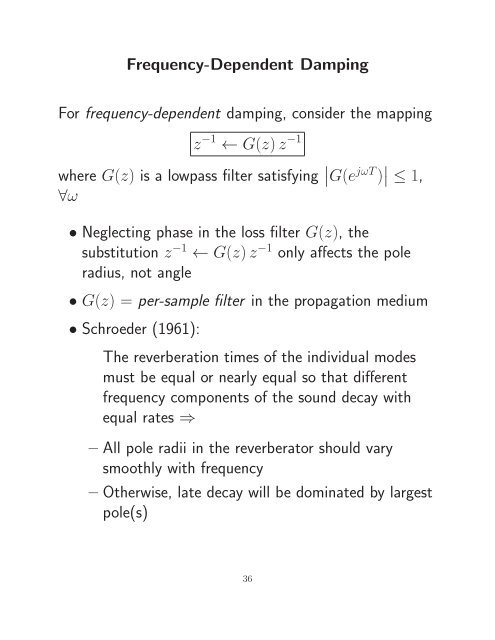Articles - CCRMA - Stanford University
Articles - CCRMA - Stanford University
Articles - CCRMA - Stanford University
Create successful ePaper yourself
Turn your PDF publications into a flip-book with our unique Google optimized e-Paper software.
Frequency-Dependent Damping<br />
For frequency-dependent damping, consider the mapping<br />
z −1 ← G(z)z −1<br />
where G(z) is a lowpass filter satisfying G(e jωT ) ≤ 1,<br />
∀ω<br />
• Neglecting phase in the loss filter G(z), the<br />
substitution z −1 ← G(z)z −1 only affects the pole<br />
radius, not angle<br />
• G(z) = per-sample filter in the propagation medium<br />
• Schroeder (1961):<br />
The reverberation times of the individual modes<br />
must be equal or nearly equal so that different<br />
frequency components of the sound decay with<br />
equal rates ⇒<br />
– All pole radii in the reverberator should vary<br />
smoothly with frequency<br />
– Otherwise, late decay will be dominated by largest<br />
pole(s)<br />
36
















